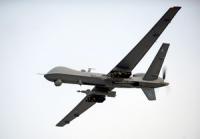-
Revolutionizing subterranean mapping and navigation
Subterranean warfare—whether involving human-made tunnels, underground urban infrastructure, or natural cave networks—has been an element of U.S. military operations from the Second World War and Vietnam to Iraq and Afghanistan. As above-ground commercial and military intelligence, surveillance, and reconnaissance (ISR) capabilities continue to grow more capable and ubiquitous, adversaries are increasingly heading underground to circumvent detection. Rapid global urbanization, furthermore, is accelerating the frequency and complexity of dangerous subterranean environments faced not just by warfighters, but also by emergency responders performing search-and-rescue missions underground: in collapsed mines, for instance, or municipal or urban settings wrecked by natural disaster. DARPA issues a Request for Information which seeks concepts for novel systems and component technologies to disruptively augment military and civilian operations underground.
-
-
If Trump wants nuclear war, virtually no one can stop him
The general in charge of America’s nuclear arsenal, John Hyten, recently said he would resist carrying out an illegal order from the president to use those weapons. His comments echoed the ones made a few days earlier by one of his predecessors, retired Air Force Gen. Robert Kehler. While the generals are no doubt military men of integrity, my four decades of experience as a diplomat and scholar of American foreign policy suggest there is no law that would make a presidential order to launch a preemptive nuclear strike on North Korea illegal. The bottom line is that a nuclear war won’t be prevented by military officers refusing to obey an order they consider illegal. And such a situation won’t be avoided by congressional action. The legislative branch is paralyzed by partisan politics. Using the bomb is up to the discretion of a president who came to office with no experience in the military, government or foreign affairs beyond real estate deals in other countries. And after ten months of on-the-job training, he seems no better prepared for such a responsibility.
-
-
Fostering collaborations for bomb squad response
Every day, state and local bomb squads place themselves in harm’s way in order to shield citizens and property from potential catastrophe. Many of the improvised explosive devices (IEDs) they face are cobbled together from everyday objects with the intent to cause maximum casualties and damage—the reality is they are easy to build, difficult to combat and their makeup constantly evolves. How do first responders stay up-to-date on the latest tactics and techniques for IED response, and how does the DHS S&T ensure state and local bomb squads have the necessary resources at their fingertips?
-
-
Study examines gun-related deaths and how to prevent them
A new study suggests various tactics for dealing with each metric of gun-related deaths. The suicide rate can be directly affected by decreasing firearm availability through safe storage practices, and the homicide rate may be decreased by preventing violent crime and deaths following a gun-related injury. Solutions for unintentional firearm-related deaths are linked mainly to education and safety precautions.
-
-
Radioactive material, leaked from a Russian nuclear complex, detected over Europe
The Russian state meteorological agency Roshydromet today released data which show exceedingly high atmospheric concentration of ruthenium-106 in the area where the Rosatom Mayak nuclear complex, located in the Southern Urals. The late-September leak, initially denied by Roasatom, the operator of the complex, caused the radioactive material to spread over northern Europe, where it was detected by IRSN and BfS, the French and German nuclear safety agencies, respectively.
-
-
Why nuclear deterrence could work on North Korea
The same logic that kept a nuclear war from breaking out between the United States and former Soviet Union is the best strategy to now pursue with North Korea, several scholars said last week at Stanford. The discussion revolved around whether North Korea will have the ability to strike the U.S. with nuclear warheads, and can the U.S. depend on a deterrence strategy like it did during the Cold War? Deterrence theory holds that nuclear weapons are intended to deter other states from attacking with their nuclear weapons, through the promise of retaliation and possibly mutually assured destruction.
-
-
Russia vetoes UN chemical weapons investigation in Syria
In an effort to protect the Assad regime from more damaging revelations about the regime’s use of chemical weapons, Russia, on Thursday and Friday, vetoed two resolutions to extend the mandate of Joint Investigative Mechanism (JIM), set up by the UN to investigate the use of chemical weapons in the Syrian civil war. JIM’s mandate expired on Friday.
-
-
Counter UAVs to drive enemy drones out of the sky

Defense drones to seek out and bring down hostile military UAVs are being developed in Australia. Military drones have changed the landscape of the modern battlefield in recent years, but the technology to counter them has not kept pace. Reacting to this gap in the market the startup is developing two models in Adelaide, South Australia. The first is a compact counter UAV drone with metal rotors that can be stored in a soldier’s pack and launched when an enemy drone is believed to be in the area.
-
-
Counter UAVs to drive enemy drones out of the sky
Defense drones to seek out and bring down hostile military UAVs are being developed in Australia. Military drones have changed the landscape of the modern battlefield in recent years, but the technology to counter them has not kept pace. Reacting to this gap in the market the startup is developing two models in Adelaide, South Australia. The first is a compact counter UAV drone with metal rotors that can be stored in a soldier’s pack and launched when an enemy drone is believed to be in the area.
-
-
Employing plants as discreet, self-sustaining sensors to warn of security threats

Few military requirements are as enduring as the need for timely, accurate information. To meet this demand, the Department of Defense invests heavily in the development of powerful electronic and mechanical sensors, and in the manpower to maintain and operate those sensors. DARPA notes that nature, the master of complexity, offers potential solutions, and that the agency new Advanced Plant Technologies (APT) program looks to seemingly simple plants as the next generation of intelligence gatherers. The program will pursue technologies to engineer robust, plant-based sensors that are self-sustaining in their environment and can be remotely monitored using existing hardware.
-
-
New mapping software makes live-fire training safer
Better to protect soldiers and sailors during live-fire training, the Office of Naval Research’s (ONR) TechSolutions program has sponsored the development of a new Google Maps-style software tool to map out training areas in great detail. This “geospatial-awareness” tool is designed to plug into the U.S. Marine Corps’ KILSWITCH—the Kinetic Integrated Lightweight Software Individual Tactical Combat Handheld for Android.
-
-
Restoring wireless communications to Puerto Rico and remote, disaster-struck areas
According to a Federal Communications Commission status report issued last week following a survey of Hurricane Maria damage, nearly 50 percent of Puerto Rico’s cell sites remain out of service, with many counties operating at less than 25 percent of full service. Daniel Bliss, director of the Center for Wireless Information Systems and Computational Architectures (WISCA) at Arizona State University, offers insights about building a wireless infrastructure with the capacity to provide immediate, ongoing communications access during emergency situations.
-
-
Most mass killers are men who have also attacked family
What do most mass killers have in common? As a researcher who studies coercive control in intimate relationships, I can point out a few key characteristics. First, they are men. Additionally, they have a history of controlling and abusing their wives and girlfriends – and sometimes other family members – before “graduating” to mass killings. The laws in the U.S. that are currently used to address domestic violence were developed for attacks by unrelated people. They don’t work so well for what happens in families. If police wait for broken bones, they miss more than 95 percent of domestic violence incidents. The seriousness of partner violence derives from the cumulative weight of all previous abuse, rather than the severity of a particular assault – and to capture that cumulative weight of partner abuse we need to define coercive control as a crime. An average of 50 women in the U.S. are shot to death each month by a current or former intimate partner. While most domestic abusers will not become mass murderers, early, consistent and effective domestic violence intervention might keep us all safer.
-
-
Developing autonomous drone swarms for urban warfare
DoD has awarded a team of researchers $7.1 million to develop a drone swarm infrastructure to help the U.S. military in urban combat. The goal is to develop a technology which would allow troops to control scores of unmanned air and ground vehicles at a time.
-
-
NATO launches Cyber Operations Center
Russia’s successful cyber-interference on behalf of its favored candidates, partiers, and causes in the United States, France, the Netherland, Germany, and the United Kingdom; its effective cyberattacks on infrastructure facilities in Ukraine and the Baltic states; and the growing cyberthreats from China, North Korea, and Iran, have convinced the member states of NATO that these threats must be met in a more systematic and comprehensive fashion.
-
More headlines
The long view
Why Was Pacific Northwest Home to So Many Serial Killers?
Ted Bundy, Gary Ridgway, George Russell, Israel Keyes, and Robert Lee Yates were serial killers who grew up in the Pacific Northwest in the shadow of smelters which spewed plumes of lead, arsenic, and cadmium into the air. As a young man, Charles Manson spent ten years at a nearby prison, where lead has seeped into the soil. The idea of a correlation between early exposure to lead and higher crime rates is not new. Fraser doesn’t explicitly support the lead-crime hypothesis, but in a nimble, haunting narrative, she argues that the connections between an unfettered pollution and violent crime warrant scrutiny.
Bookshelf: Smartphones Shape War in Hyperconnected World
The smartphone is helping to shape the conduct and representation of contemporary war. A new book argues that as an operative device, the smartphone is now “being used as a central weapon of war.”
